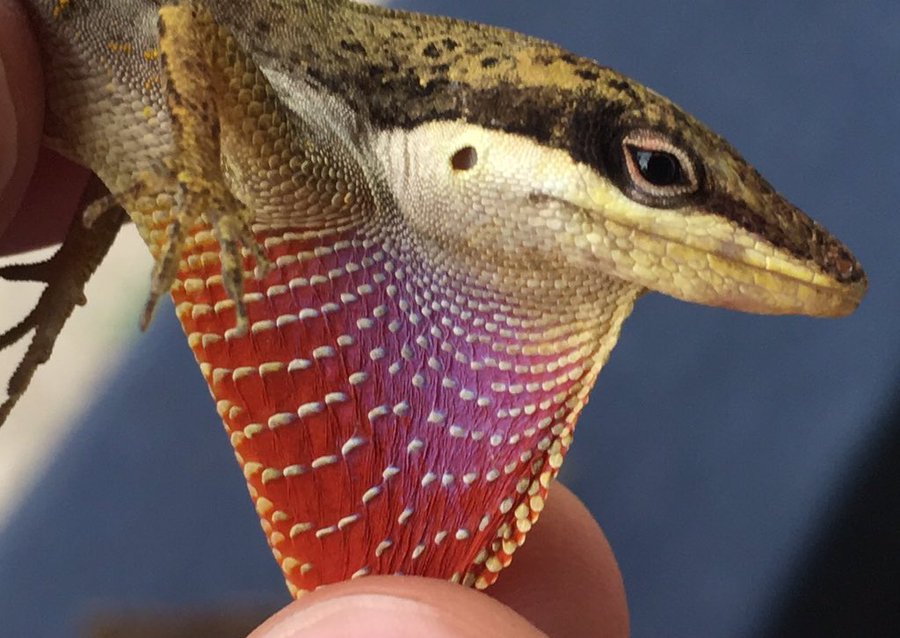
Photo: Mikel2500, iNaturalist
Happy Thursday!
Today’s anole is the Bronze anole, Anolis aeneus! The Bronze anole can be found on most of the Grenadines (the small islands between St. Vincent and Grenada) and Grenada itself, and has been introduced to Trinidad & Tobago and Guyana.
Bronze anoles can be found in forests and some urban environments, and is one of many anole species that also feed on plant matter (Simmons et al., 2005), like nectar and seeds. Males have an SVL of 77mm while females are 55mm.

Photo: Mark Hulme, iNaturalist
Though called the Bronze anole, not all individuals are brown/bronze; some may be greyish brown or olive and their mottled pattern may be light or dark. The dewlap of the Bronze anole is pale white or green and spots of orange or yellow may be near the front edge. They spend a lot of time in a ‘survey posture’ sitting on tree trunks surveying the habitat for prey items that may come along.
Hybridisation between A. aeneus and A. trinitatis (St. Vincent bush anole) has been found to occur, with the possibility of fertile offspring (Losos, 2009).

Photo: Mike G Rutherford, iNaturalist




























![Anolis landestoyi (2 of 2) [image] | EurekAlert! Science News](https://i0.wp.com/www.eurekalert.org/multimedia/pub/web/117940_web.jpg?w=629&ssl=1)

